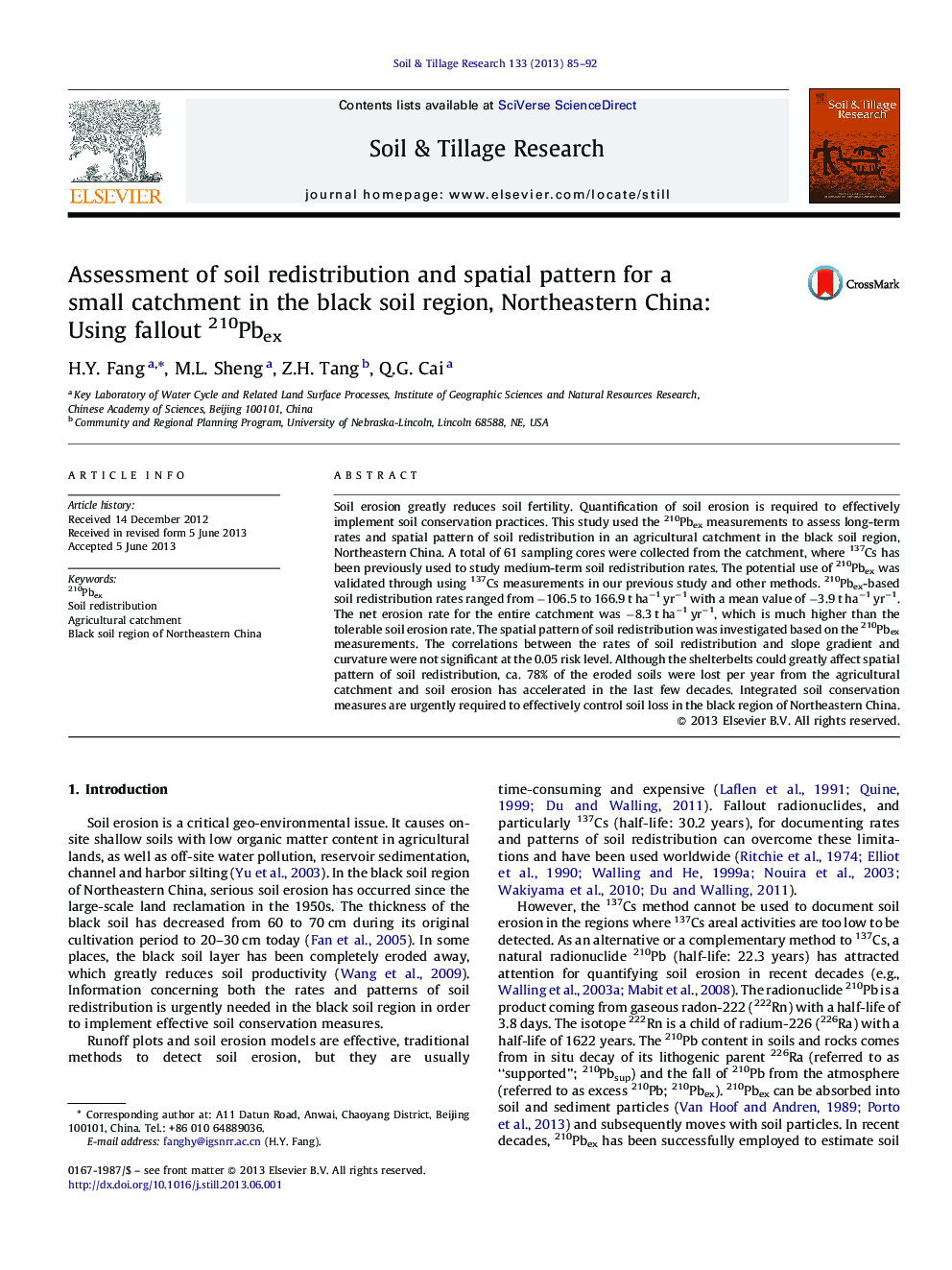| Article ID | Journal | Published Year | Pages | File Type |
|---|---|---|---|---|
| 6773574 | Soil and Tillage Research | 2013 | 8 Pages |
Abstract
Soil erosion greatly reduces soil fertility. Quantification of soil erosion is required to effectively implement soil conservation practices. This study used the 210Pbex measurements to assess long-term rates and spatial pattern of soil redistribution in an agricultural catchment in the black soil region, Northeastern China. A total of 61 sampling cores were collected from the catchment, where 137Cs has been previously used to study medium-term soil redistribution rates. The potential use of 210Pbex was validated through using 137Cs measurements in our previous study and other methods. 210Pbex-based soil redistribution rates ranged from â106.5 to 166.9 t haâ1 yrâ1 with a mean value of â3.9 t haâ1 yrâ1. The net erosion rate for the entire catchment was â8.3 t haâ1 yrâ1, which is much higher than the tolerable soil erosion rate. The spatial pattern of soil redistribution was investigated based on the 210Pbex measurements. The correlations between the rates of soil redistribution and slope gradient and curvature were not significant at the 0.05 risk level. Although the shelterbelts could greatly affect spatial pattern of soil redistribution, ca. 78% of the eroded soils were lost per year from the agricultural catchment and soil erosion has accelerated in the last few decades. Integrated soil conservation measures are urgently required to effectively control soil loss in the black region of Northeastern China.
Related Topics
Physical Sciences and Engineering
Energy
Renewable Energy, Sustainability and the Environment
Authors
H.Y. Fang, M.L. Sheng, Z.H. Tang, Q.G. Cai,
